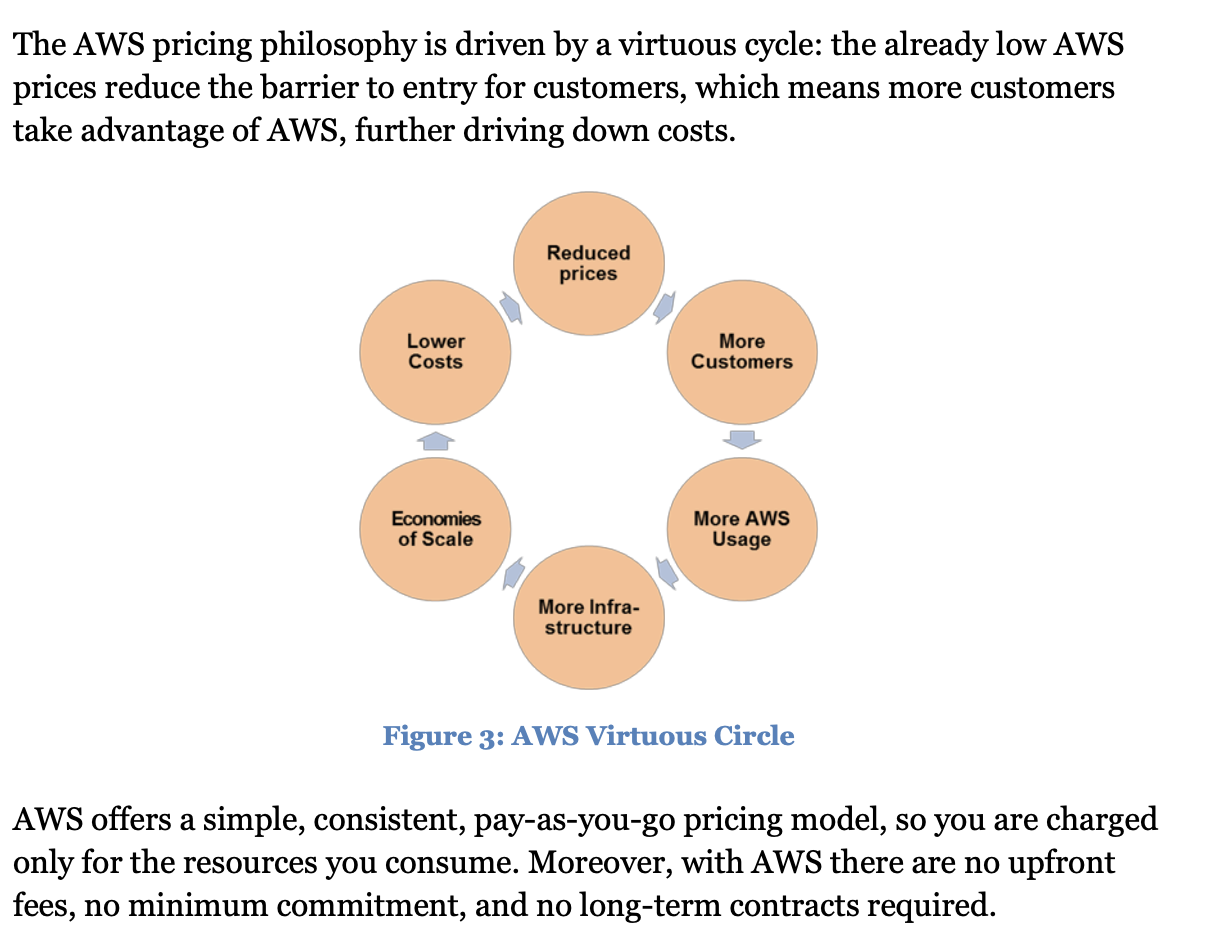The AWS Pay-Per-Use model

“The primary value proposition around cost for AWS is that it creates the opportunity for agility using a pay-as-you-go model. Traditional CapEx models make it difficult to quickly test new ideas.”
With a consumption-based model, you can increase or decrease usage of resources based on business requirements without having to forecast. For example, only stand-up your non-prod environments for 8 hours a day - and that’s all you pay.
The decision to migrate to cloud - not always obvious
I took the AWS SAP cert exam earlier this year and prepped using the A Cloud Guru learning platform. The certification training takes you through a number of viewpoints. For instance, I believe they did an excellent job showing why some enterprises might choose to stay on prem.
Take the following cloud migration question for example (that I have modified):
An initial analysis by your company has shown that on-prem costs are significantly less than cloud deployments. Additionally, costs would most certainly increase during a migration given items like training, dual environments, lease penalties, consulting and planning. What items should you check to ensure parity?
- Ensure that soft costs (i.e., agility, maintainance) are somehow accounted for in both models.
- If amortization is being used for on-prem assets, using a Reserved Instance cost is more realistic than On-Demand. (Bulk buys are almost always cheaper than on-demand)
- Leveraging managed services will be more cost-effective than just mimicking a pure on-prem server farm.
- All of the above (correct)
Whereas some organizations still haven’t made the leap and some are choosing to exercise caution by implementing a hybrid approach, there is some much more to the cloud than just the dollars saved.
Pour cost savings into innovation
“By moving to the consumption-based model of the cloud you can increase innovation within the organization. However, one of the biggest challenges of the consumption-based model is the lack of predictability.
You need to balance agility and innovation against cost. As multiple teams spin up instances to test new ideas, it is important to control and optimize AWS spending as cloud usage increases. Don’t target cost savings as the end goal. Instead, optimize spending by focusing on business growth opportunities that can result from innovative ideas.”
Use managed services to reduce cost of ownership: In the cloud, managed services remove the operational burden of maintaining servers for simple tasks. Since managed services operate at cloud scale, they can offer a lower cost per transaction or service.”